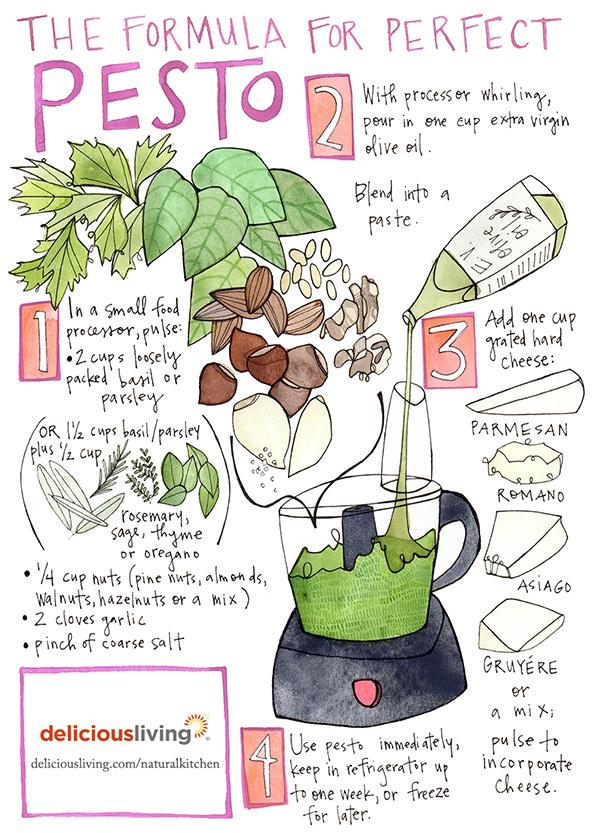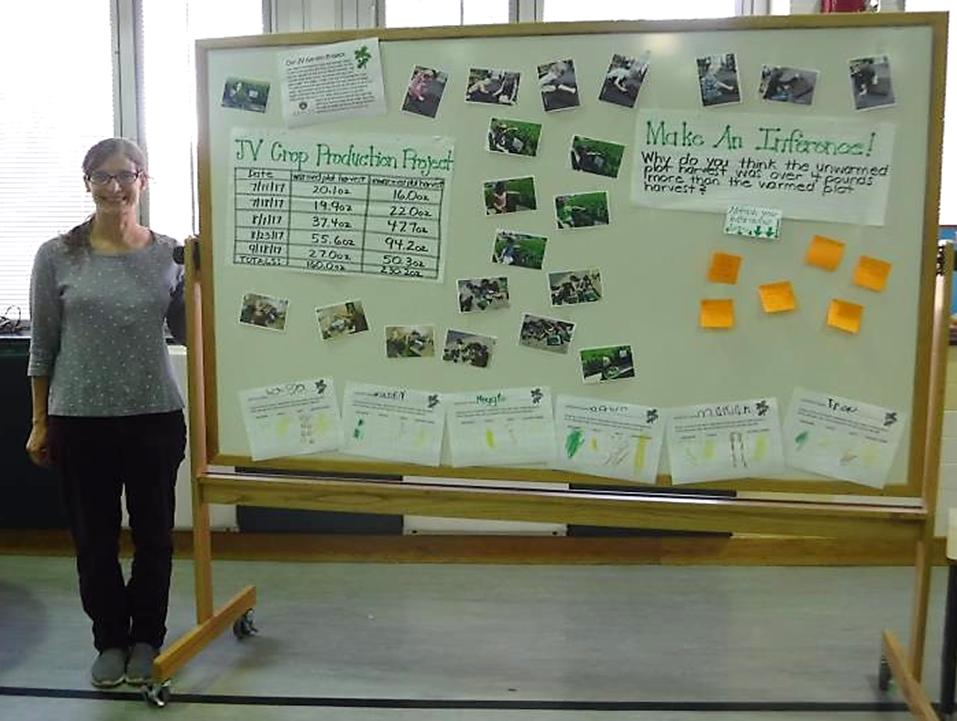Final Crop Production Study
Home › Forums › APPLES Teacher Forum › Final Crop Production Study
- This topic has 0 replies, 1 voice, and was last updated 7 years ago by
 Kristin Joivell.
Kristin Joivell.
-
AuthorPosts
-
June 19, 2018 at 8:05 pm #713
 Kristin JoivellParticipant
Kristin JoivellParticipantWow! The Crop Production Project was certainly a fruitful project! Starting the basil seeds in the indoor garden last April, growing them in the indoor garden through May, growing the basil in the warmed OTC plot and the ambient temperature fenced plot from last June until last September, and closing down the two plots last October, took a lot of time, but we were able to harvest almost 25 pounds of basil leaves to be processed into pesto!
Since the basil leaves were still very small last May, my class from that school year used them as a topping on mini pizzas after reading Shelley Rotner’s book together as a class: Hold the Anchovies! A Book About Pizza. Students made observations about the basil leaves using their senses of sight, touch, and smell before adding them to the pizza to taste them. For some students, this was the first time they had eaten fresh basil!
In the fall with the next year’s class, processing the basil leaves into pesto was a new experience for many in the group–many of the students had never heard of pesto and didn’t know what it was used for or made out of. I used the following recipe from Delicious Living (excluding the nuts) with my class to make pesto out of the harvested basil leaves.

I was able to serve the pesto at our school’s Open House and a Family Reading Night event in the fall and then at my Family Science Night Event the following spring. In my display, I included the data from our Crop Production Project, photographs of students working on the project, copies of the pesto recipe for families to take home, samples of the pesto for families to taste on crackers, and the opportunity to make an inference about why the unwarmed plot produced more basil than the warmed plot.

Inferences that families wrote down at the events about why the unwarmed plot produced more basil than the warmed plot included the following:
- Because the warmed plot had too much heat and that was trapped in the plastic wrap.
- Because the warmed plot got less air.
- Because the ground got too warm inside the plastic to make the plants grow.
- Because the unwarmed plot had more space to grow.
- Because maybe basil is a cold weather plant so it grew better in the cooler plot.
- Because sunshine wasn’t able to get to the plants enough in the warmed plot.
In addition to serving the pesto to the families at these events, I invited last year’s students back to my classroom for an afternoon to see the final results of the growth in the Crop Production Study. I led the students through a discussion about reasons why the unwarmed plot might have produced more basil than the warmed plot. Then, both last year’s class and this year’s class shared a pesto and bread snack together! Again, just like with the fresh basil last spring, it was a new experience for some of the students in both classes to eat freshly made pesto.
In addition to learning about how climate change can affect crop production, students were also able to see the entire process it takes to produce food from seed to table. I feel that this was also a very valuable part of this segment of the JV Phenology Project for students to experience!
-
AuthorPosts
- You must be logged in to reply to this topic.
Recent Comments